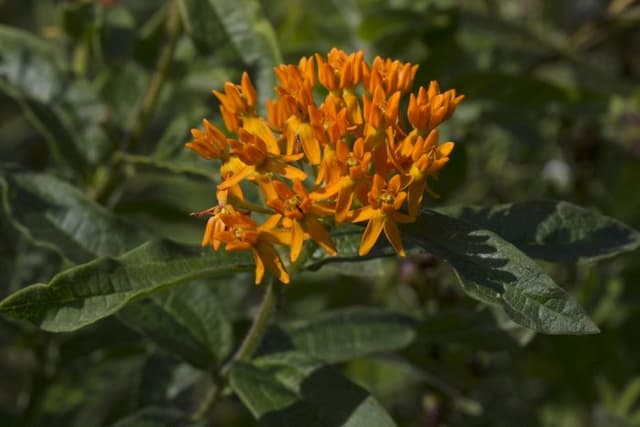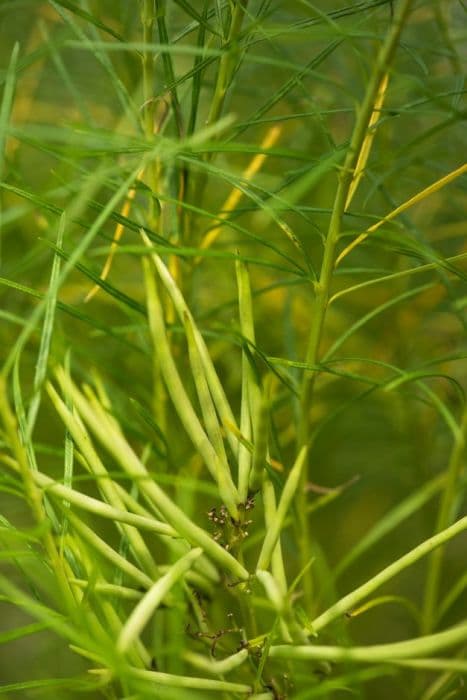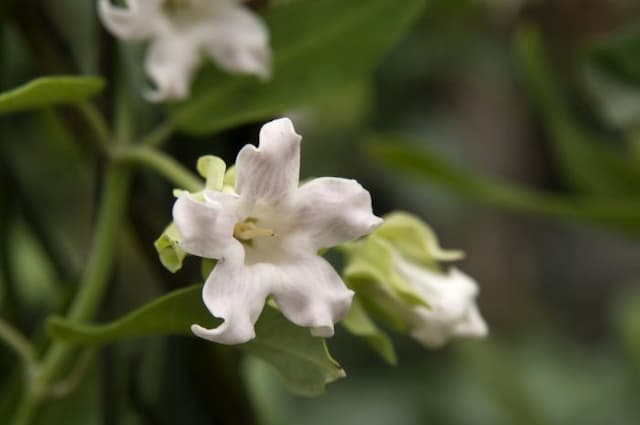Periwinkle Vinca major

ABOUT
Vinca major, commonly known as the big periwinkle or large periwinkle, is an evergreen perennial that is widely recognized for its trailing vines and attractive flowers. The plant bears glossy, oval to lance-shaped leaves that are dark green in color and provide a beautiful backdrop for the blooms. These leaves typically grow opposite each other along the stem, creating a lush, dense foliage. The flowers of the big periwinkle are its most distinctive feature. They are a radiant violet-blue color, though some varieties may show flowers in hues of lilac or white. The blooms are pinwheel-shaped with five petals that spread out from the center, and a darker central eye that often appears to be more intense in color. The blooming period usually occurs in the spring and can extend into the fall in some climates, offering a long-lasting display. The stems of the big periwinkle are slender and can trail along the ground. They are capable of rooting at the nodes wherever they come into contact with soil, allowing the plant to spread and form a dense ground cover. This characteristic can make the big periwinkle a popular choice for covering larger areas or slopes, where its cascading habit can be appreciated.
About this plant
 Names
NamesFamily
Apocynaceae
Synonyms
Bigleaf Periwinkle, Large Periwinkle, Greater Periwinkle, Blue Periwinkle, Periwinkle, Garden Vinca, Large Vinca
Common names
Vinca major var. variegata (Loudon) Regel, Vinca major f. variegata (Loudon) Moldenke.
 Toxicity
ToxicityTo humans
Periwinkle is considered toxic if ingested due to the presence of alkaloids such as vincamine. Symptoms of periwinkle poisoning can include abdominal cramps, vomiting, diarrhea, and in severe cases, seizures, low blood pressure, depression of the central nervous system, and coma. Accidental ingestion of significant amounts should be considered a medical emergency.
To pets
Periwinkle is also toxic to pets, including dogs and cats, due to its alkaloid content. Symptoms of periwinkle poisoning in pets can mirror those in humans, presenting as vomiting, diarrhea, muscle weakness, seizures, and possibly depression of the central nervous system. If a pet ingests periwinkle, contact a veterinarian immediately.
 Characteristics
CharacteristicsLife cycle
Perennials
Foliage type
Evergreen
Color of leaves
Green
Flower color
Blue
Height
1-3 feet (0.3-0.9 meters)
Spread
1-3 feet (0.3-0.9 meters)
Plant type
Creeper
Hardiness zones
7
Native area
Mediterranean
Benefits
 General Benefits
General Benefits- Ground Cover: Vinca major is commonly used as a ground cover plant due to its fast-growing habit and spreading nature, which helps in covering bare spots in gardens and landscapes.
- Low Maintenance: It is a low-maintenance plant that requires minimal care once established, making it ideal for gardeners seeking easy-to-care-for plants.
- Erosion Control: Its root system helps stabilize soil, preventing erosion on slopes and in areas prone to soil loss.
- Aesthetic Appeal: With its glossy green leaves and attractive blue or purple flowers, Vinca major adds visual interest to garden settings throughout its blooming season.
- Shade Tolerant: It is well-suited for growing in shaded areas where other plants might struggle to thrive, filling in spaces beneath trees and shrubs.
- Drought Resistant: Once established, Vinca major has a good tolerance for drought, which is beneficial in regions with water restrictions or low rainfall.
- Deer Resistance: It is generally resistant to deer, which can help prevent damage to gardens and landscapes caused by browsing animals.
 Medical Properties
Medical Properties- Alkaloids: Contains alkaloids such as vincamine, which have been used in the treatment of cerebrovascular and cognitive disorders.
- Vasodilatory Effects: Vinca major is traditionally believed to exert a vasodilatory effect.
- Cancer Research: Some compounds, like vincristine and vinblastine, have been derived from a closely related species, Vinca minor, and are used in cancer chemotherapy, but Vinca major itself is not directly used for cancer treatment.
 Air-purifying Qualities
Air-purifying QualitiesThis plant is not specifically known for air purifying qualities.
 Other Uses
Other Uses- Vinca major, commonly known as periwinkle, can be used as a ground cover in landscaping to prevent soil erosion due to its ability to spread quickly and form a dense cover.
- As an ornamental plant, periwinkle is valued for its attractive flowers and shiny leaves and is often planted in gardens and parks for aesthetic appeal.
- In floristry, periwinkle flowers are sometimes used in arrangements and bouquets due to their beautiful blue-violet color and lasting nature when cut.
- Periwinkle is used in container gardening and hanging baskets for its trailing vines and vibrant flowers that can add color to patios and balconies.
- The plant can be used in topiary art, where its vines can be trained over structures to create living sculptures.
- Gardeners might use periwinkle as a living mulch under trees and shrubs to suppress weeds and maintain soil moisture.
- In areas of mild winters, periwinkle can provide evergreen ground coverage, maintaining garden color throughout the year.
- Periwinkle is sometimes utilized in naturalizing projects to cover large areas with a low-maintenance plant that requires little care once established.
- The stems and leaves of periwinkle have been traditionally used to create natural dyes for textiles in some cultures.
- Some people use periwinkle in companion planting strategies, believing that it can keep pests away from vegetables and other garden plants due to its dense growth.
Interesting Facts
 Feng Shui
Feng ShuiThe Periwinkle is not used in Feng Shui practice.
 Zodiac Sign Compitability
Zodiac Sign CompitabilityThe Periwinkle is not used in astrology practice.
 Plant Symbolism
Plant Symbolism- Memory: Vinca major is often associated with memories, both fond and persistent, due to its evergreen nature and ability to cover ground, symbolizing how memories can pervade our thoughts.
- Eternity: The plant's perennial growth signifies eternity or everlasting life, a theme that resonates in many traditions and is often represented in funeral arrangements.
- Friendship: With its trailing vines that cling and grow, Vinca major can symbolize enduring and growing friendships that thrive over time.
- Love: As a plant with attractive and persistent flowers, it's often associated with affection and lasting love.
 Water
WaterPeriwinkle should be watered regularly, especially when first planted to help establish roots. Mature periwinkle is relatively drought-tolerant, but it does prefer consistent moisture. During the growing season, water thoroughly once a week if there hasn't been significant rainfall. Each watering session should provide the periwinkle with about one inch of water, which roughly translates to 0.623 gallons per square foot. Adjust the frequency during extremely hot or dry weather by providing additional water, but be cautious not to overwater as periwinkle does not like soggy soil.
 Light
LightPeriwinkle thrives in partial shade to full sun. The ideal spot for periwinkle is where it can receive morning sunlight and afternoon shade, especially in regions with hot summers. The plant is adaptable, however, and it can also grow in full sun if it receives enough moisture. Avoid deep shade as this can lead to poor flowering and leggy growth.
 Temperature
TemperaturePeriwinkle is hardy in a wide range of temperatures but performs best between 60°F and 75°F. It can tolerate minimum temperatures down to about -10°F, although prolonged exposure to temperatures below 20°F may damage the plant. Periwinkle prefers warmer climates and will grow perennially in areas without extreme winter cold.
 Pruning
PruningPruning periwinkle is important to maintain its shape, encourage bushier growth, and prevent it from becoming invasive. Prune periwinkle in early spring before new growth starts. It's also beneficial to trim the plant after flowering to promote a second bloom and tidy its appearance. Pruning can be done as often as needed to keep the periwinkle within its boundaries.
 Cleaning
CleaningAs needed
 Soil
SoilPeriwinkle thrives in well-draining soil that is rich in organic matter with a pH range between 6.0 and 7.5. An ideal soil mix can be created using two parts peat moss or garden compost, one part sand or perlite, and one part loamy soil to ensure proper drainage and aeration.
 Repotting
RepottingPeriwinkle does not need to be repotted frequently due to its spreading growth habit; it's typically sufficient to repot every 2-3 years to refresh the soil or if the plant has outgrown its current container.
 Humidity & Misting
Humidity & MistingPeriwinkle is generally tolerant of a wide range of humidity levels but prefers conditions that are not excessively dry. Average room humidity is usually adequate for this robust plant.
 Suitable locations
Suitable locationsIndoor
Place Periwinkle in bright, indirect light and keep the soil moist.
Outdoor
Plant Periwinkle in partial shade and keep soil moderately moist.
Hardiness zone
7-9 USDA
 Life cycle
Life cycleVinca major, commonly known as bigleaf periwinkle or greater periwinkle, germinates from seed, usually in spring, although it can sometimes also propagate vegetatively via cuttings or layering. Seedlings emerge and develop into juvenile plants, with characteristic glossy, oval leaves and vines beginning to spread. As it matures, the perennial nature of bigleaf periwinkle becomes evident, with growth continuing year after year. The plant reaches flowering maturity typically within one to two years, producing large, blue or purple flowers predominantly in the spring. After pollination, typically by insects, the flowers develop into fruit capsules that contain seeds, which will disperse, completing the reproductive cycle. Bigleaf periwinkle continues to spread as a ground cover through its own root system, capable of forming dense mats that can persist and spread in conducive environments.
 Propogation
PropogationPropogation time
Spring to summer
For the Periwinkle (Vinca major), the most popular method of propagation is through stem cuttings. This is usually done in the spring or early summer when the plant's growth is most vigorous. Gardeners should select a healthy, non-flowering stem and cut a piece around 4 to 6 inches (10 to 15 cm) in length. The lower leaves should be stripped off, and the cut end can be dipped in rooting hormone to encourage root development. The stem cutting should then be planted in a well-draining soil mix, with the cut end buried about 1 to 2 inches (2.5 to 5 cm) deep. The soil should be kept moist but not waterlogged, and the cuttings typically root within a few weeks. Once rooted, the new Periwinkle plants can be transplanted to their desired location.









